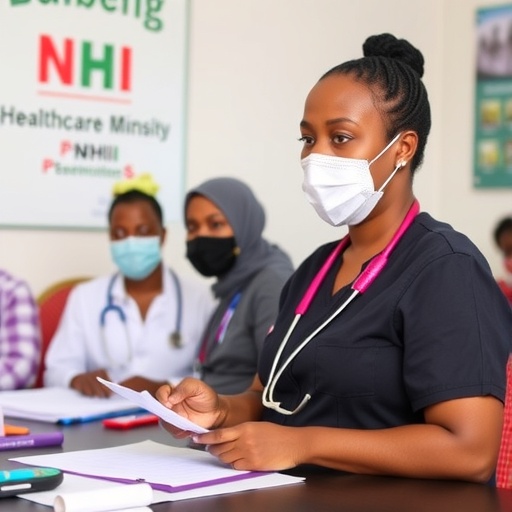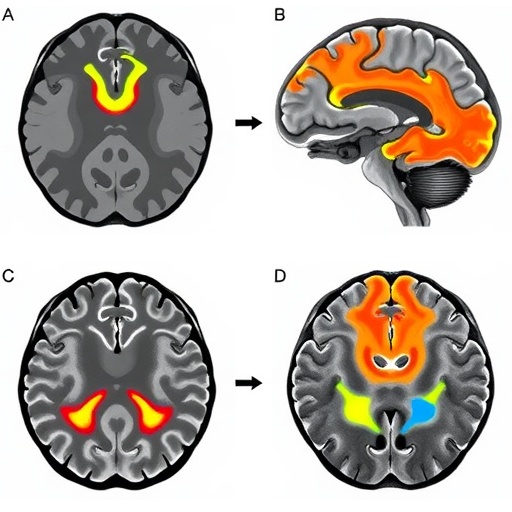In a groundbreaking study, researchers analyzed healthcare practitioners’ perceptions regarding the implementation of the National Health Insurance (NHI) in the public sector of the Sedibeng district, located in the Gauteng province of South Africa. The findings reveal critical insights into the views and sentiments of practitioners as the region gears up for an ambitious overhaul of its healthcare funding system. As South Africa grapples with a dual healthcare system characterized by immense disparities, this research provides a vital perspective that could influence future policy-making and implementation strategies.
The NHI, aimed at providing universal healthcare coverage to all citizens, has been a focal point of health policy discussions in South Africa. Its proposed implementation has generated significant debate among healthcare professionals, particularly concerning the practicalities and potential outcomes of such a comprehensive reform. The study sheds light on the underlying concerns held by practitioners—many of whom have voiced skepticism about the NHI’s feasibility, fairness, and overall impact on patient care and access.
Healthcare professionals in the Sedibeng district expressed various insights about the anticipated challenges associated with the rollout of the NHI. One prevalent concern highlighted in the research was the potential strain on existing healthcare resources. Practitioners worry that without adequate infrastructure and staffing, the implementation of NHI could exacerbate the very issues it aims to address, including long wait times and inadequate patient care. Such concerns underscore the need for systematic resource management and enhanced investment in healthcare facilities before the NHI is launched.
The emotional and professional implications of the NHI rollout present another layer of complexity in the practitioners’ attitudes. Many expressed feelings of uncertainty and anxiety, stemming from their experiences within the current system. The fear of diluting the quality of care offered to patients under the new model was particularly pronounced. Practitioners are not only concerned about how the NHI will affect their ability to provide quality care, but they are also apprehensive about how it will alter their professional roles and responsibilities.
The study underscores the importance of effective communication and education regarding the NHI among healthcare professionals. Many practitioners reported feeling inadequately informed about the specifics of the NHI initiative, leaving them ill-prepared to address patient inquiries or concerns. Enhancing communication channels between policymakers and healthcare workers is crucial; as a lack of information could lead to misinformation, further breeding skepticism and resistance against the reform.
While many practitioners held reservations about the NHI, some expressed optimism about improving health outcomes in the district. The potential for reduced healthcare inequities was seen as a significant benefit. However, the consensus remains that for the NHI to achieve its intended goals, it must be implemented alongside comprehensive training and capacity-building programs for healthcare workers. The practitioners’ willingness to engage positively with the reform hinges on their confidence in effective training and resource allocation.
The study revealed geographical disparities in the perceptions of healthcare practitioners within the Sedibeng district. Some located in more urbanized areas exhibited greater support for the NHI, believing that it could potentially streamline care delivery and enhance collaboration between healthcare providers. In contrast, those in rural areas expressed stronger skepticism, citing concerns about the existing inadequacies in healthcare access and the feasibility of transitioning to a new funding model without first addressing foundational issues.
The tension between the felt need for reform versus the readiness to embrace change manifests in the experiences of practitioners. Many hold seasoned perspectives shaped by years of working in a hybrid healthcare system, complicating their reactions to the NHI. Understanding these dynamics is vital for policymakers as they navigate the sensitive terrain of healthcare reform. Engaging with healthcare practitioners directly and gathering their input can foster a sense of ownership and collaboration in the NHI’s implementation process.
Moreover, the study highlights the critical need for ongoing dialogue and reassessment as the NHI moves from concept to reality. As practitioners’ opinions evolve in response to new information and experiences, adjusting implementation strategies may prove essential for success. Continuous feedback loops, where practitioners’ perspectives are solicited and integrated into policy adjustments, will be integral to building trust and ensuring the NHI’s sustainability.
Furthermore, the ethical implications of the NHI’s rollout were brought to light in the study. Healthcare practitioners are acutely aware of their responsibilities towards their patients and communities. The prospect of a funding model that prioritizes equity and access galvanizes some practitioners, who view their role in advocating for patients as paramount. It is essential to address the moral concerns of healthcare workers as part of the NHI discourse, ensuring that they are supported and empowered to continue delivering dedicated care.
The timing of the research coincides with increasing global attention towards health equity, particularly in the aftermath of the COVID-19 pandemic, which has exposed vulnerabilities in healthcare systems worldwide. This study serves as a timely reminder that local perspectives must inform global health reform efforts. One size does not fit all; tailored strategies must consider the unique contexts and challenges faced within particular districts, such as Sedibeng.
In conclusion, the perceptions of healthcare practitioners regarding the NHI implementation in Sedibeng are complex and varied. The qualitative insights collected in this study underscore the need for targeted campaigns to address apprehensions, improve education, and cultivate a collaborative environment. As South Africa stands on the precipice of transformative health reform, the voices of frontline healthcare workers must guide the journey toward equitable and accessible healthcare for all citizens. Their experiences, concerns, and hopes illustrate the essential role of human capital in shaping the future of South Africa’s healthcare landscape.
The responsibility lies not only with policymakers to craft effective reforms but also with healthcare practitioners to actively participate in the conversations that mold the healthcare system’s direction. Together, they can navigate the intricate pathways toward a more just and comprehensive healthcare framework through mutual trust, informed dialogue, and a commitment to shared goals.
Subject of Research: Perceptions of healthcare practitioners about NHI implementation in the public sector in Sedibeng district, Gauteng province.
Article Title: Perceptions of healthcare practitioners about NHI implementation in the public sector in Sedibeng district, Gauteng province.
Article References:
Mudzweda, A.D., Simbeni, T.V. & Mogale, N.M. Perceptions of healthcare practitioners about NHI implementation in the public sector in Sedibeng district, Gauteng province.
BMC Health Serv Res 25, 1286 (2025). https://doi.org/10.1186/s12913-025-13409-x
Image Credits: AI Generated
DOI: https://doi.org/10.1186/s12913-025-13409-x
Keywords: National Health Insurance, healthcare practitioners, Sedibeng district, Gauteng province, healthcare reform, public sector, perceptions, healthcare equity.
Tags: dual healthcare system disparitieshealthcare funding reform GautengHealthcare practitioners views on NHIhealthcare professionals skepticismhealthcare resource strainNational Health Insurance in South AfricaNHI implementation challengespatient care access implicationspolicy-making in South African healthcarepublic sector healthcare reformsSedibeng district healthcare insightsuniversal healthcare coverage concerns





